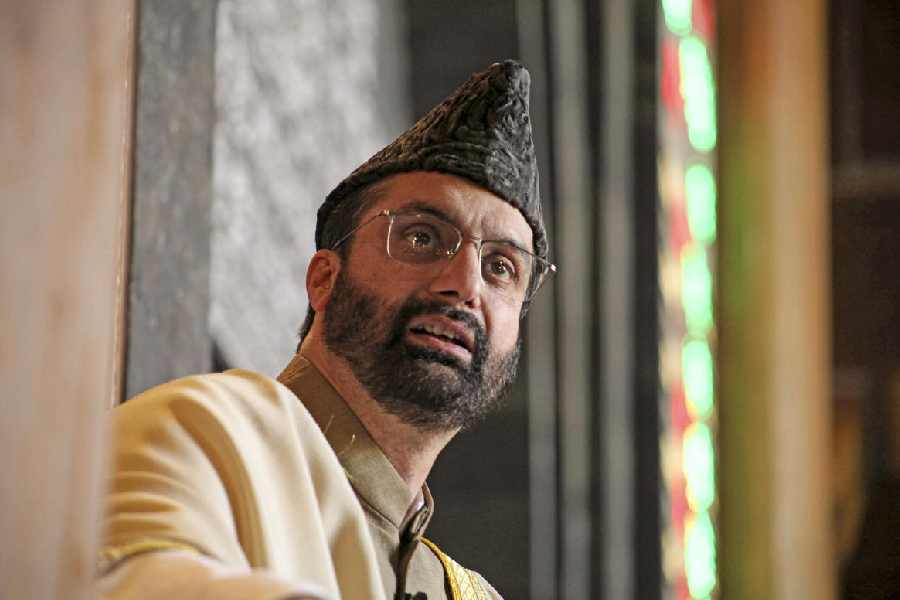 |
| Peking duck |
Whoever it was who thought a rose would smell as sweet if it was called, say, a gainda, obviously had it all wrong. Take the Rangoon creeper, which I was told by some nature-loving friends is the accepted name of the white and pink flowering vine that is known as Madhu Malti in the north and Madhabilata in the east. Now just imagine calling it the Yangon creeper. It doesn’t smell as good, does it? Likewise, I always think, Beijing duck is nowhere near as appetising as the Peking duck.
The thought came to my mind the other day when I was feasting on some Peking duck at a fairly new restaurant that has opened up in Calcutta. The Flying Monk, off AJC Bose Road, serves Pan-Asian food, but I was so struck by its duck preparations that I thought I’d focus on it. And that’s because though there are traditional duck dishes in many of our regional cuisines, it is not something that is usually prepared at home on normal occasions.
There are reasons for that, says chef Sujit Sinha, owner of Tangerine, who had cooked some delicious duck for me on a couple of occasions. For many years, there were few really top quality duck farms in the country. Indian ducks are not always fatty, which affects the quality of the meat. Now, in the last few years, fatty ducks are being imported into the country and reared in controlled situations. So, a lot of our top chefs, who were earlier wary of preparing duck, are now looking at various ways of cooking the bird.
Swatantra Verma, the executive chef at The Flying Monk, stresses that cooking the Peking duck is a time-consuming process. You have to first treat it with hot water, honey and vinegar, he says — which cleans the duck, and gives it colour. Then you have to hang it for at least 12 hours after marinating it in a temperature that’s roughly around 4°C. And then you roast it, he says.
 |
| Stir fried double-cooked duck |
Other chefs follow the basic rules when they are preparing the dish. Neeraj Tyagi, executive chef at The Claridges in Delhi, steams his duck for roughly two hours after marinating it for 14 hours or so. Once the flavours are infused in the duck, the other steps — roasting or grilling — follow. Chef Tyagi keeps the soft duck in the fridge after it’s been steamed, because it helps the fat to harden. “And it’s the fat that gives it the taste,” he says. (Now you know why one of the top celebrity chefs called his restaurant The Fat Duck.)
For those who are hoping to cook some duck in this festive season, chef Tyagi suggests that you buy a duck that weighs about 2.5 to 3 kilos. “The duck should have some fat,” he says.
Chef Tyagi cooks his duck in various ways, and I particularly remember a dish of steamed and grilled duck served with pumpkin and pasta that he cooked for me several months ago. Chef Sinha’s Oriental duck preparations are also something to write home about. To enhance the taste, these days chef Sinha cooks the meat in a stock and then dry roasts it. He then presents it with various kinds of sauces — not just the traditional plum sauce, but with tamarind and plum, chilli bean sauce, a Thai yellow curry flavoured sauce and so on. The meat is served with rice pancakes or glutinous rice balls.
I have had great times with ducks of all kinds. I remember the anatra all’arancia — duck in orange, a Tuscany speciality — cooked by chef Davide Cananzi when he was with the Hotel Hindusthan International, and a Long Island duck breast that chef Tyagi and his colleague Ravi Saxena cooked with the strong flavours of the Hawaiian red volcanic salt and star anise.
But chef Verma’s stir fried double-cooked duck is something that you can easily try out at home. For this, he roasts a duck in the oven, and then fries it crisp. He tosses it in hoisin sauce, butter and red wine. He tosses some vegetables in butter, salt and pepper. And then he serves the duck with the roasted veggies. If you brush your duck with some honey, you can make it really crisp, the chef adds.
I would have ended with something like ‘Have a quacking meal’, but a site devoted to ducks tells me that very few ducks actually quack. Mostly, they squeak, grunt and groan. And I suppose I would too if I were to be grilled and roasted.
Teriyaki Duck Breast (serves 1)
 |
Ingredients:
155g duck breast with skin salt to taste 2g ground white pepper 30ml teriyaki sauce 35g teriyaki glaze 20g asparagus 20g button mushroom 20g broccoli 20g red bell pepper 20g yellow zucchini 10ml oil 1 bamboo leaf
Method:
Marinate the duck breast in teriyaki sauce and ground white pepper. Pan sear the breast. Roast the duck in an oven for 8-10 minutes at 250°C. Grill all the vegetables in pan. Slice the cooked duck. On a plate put the bamboo leaf and place the sliced duck on top. Put the vegetables on the side of the plate. Pour the glaze on top.
Aromatic Crispy Duck (serves 5)
 |
Ingredients:
1 medium-sized duck 25g ground black pepper 25g cumin seed 60g Szechuan pepper 20g 5-spice powder 110g sea salt 5 pancakes 40g cucumber 20g spring onion 40ml hoisin sauce 20g sweet chilli sauce
Method:
Roast the black pepper, cumin seed and Szechuan pepper. Grind the roasted ingredients and sea salt. Apply the powder to the duck for 10-15 minutes. Keep it aside for at least 12 hours. Pot steam the duck for at least one hour 45 minutes. Let it cool. Now de-bone the duck and fry till it’s crisp. Cut into thick pieces. Cut the cucumber into juliennes, and the spring onion into thin 3-inch long strips. Take a pancake and spread the hoisin sauce over it. Arrange spring onion, cucumber and the crispy duck on each pancake. Roll it up and serve with hoisin sauce.










